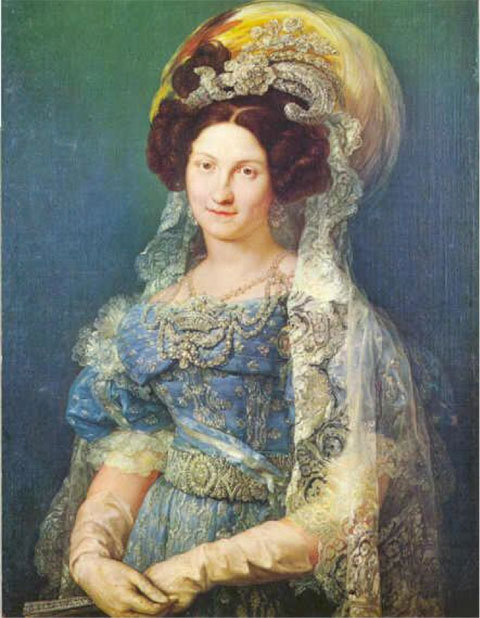At the beginning of the class we have started forming the groups of the project. Today my group have finished the first chapter of the comic. It is being about Charles IV's and his reign between 1788-1808, the Peninsular War between 1808-1813. It confronted the Napoleon army against the Spanish army. Also it speaks about Ferdinand VII's and his reign.
On the middle of the class, my group have started the second chapter which is coming about the Regencies in 1833-1843 during the Isabella's minority. While Anca and me were writing the contents of each panel María and Andrei were making the sketch of the panel.
About the regencies I can say that there were two regents in Spain: Isabella II's her mother Mª Christina(1833-140) and general Baldomero Espartero(1841-1843)
The First Carlist War (1833-1840) conditioned all this period and many political decisions were related to the war circumstances. This wasn't only a succesion war, but a confrontation between two ideologies, absolutism and between two conceptions of the State:
-The carlists were supported bu the rural nobles, the low clergy and small peasants of some areas of the country where small estate were predominant: the Basque Provinces, Navarre and interior of Catalonia, Aragón and Valencia.
-The isabelinos were supported by the bourgeoisie. They defended a constitutional monarchy and free market economy.
The war lasted for 7 years. The carlists controlled some areas in the North and North East of Spain, but they didn't take any important city. The war ended up in 1839, with the signature of the Vergara Agreement between two generals: the liberal Espartero and the Carlists Maroto.
Besides the Carlist war, the main events of Mª Christina's regency were the appearance of the first political parties in Spain and the definitive end of the Ancien Régime.
*In this period the liberals split up into two groups:
-Moderates
-Progressive Party
Espartero was the Regent of Spain for two years (1841-1843), but his authoritarian way of ruling and his free trade policy got the opposition of a big part of the population. In 1843 Espartero resigned and the Cortes decided that Isabella, who was 13 years old, was of age and she was proclaimed queen.
Here we can see Baldomero Espartero

Here we can see Mª Christina of Bourbon-The Two Sicilies


Hello Jaime,
ReplyDeleteThere is one mistake with the pictures:
Isabella II's mother was Mª Christina of Bourbon-the Two Sicilies, not Mª Christina of Habsburg, who was Alphonse XIII's mother. You should change the last picture.
Here you have my corections. There are some words in brackets to erase:
At the beginning of the class we have started forming the groups of the project. Today my group has finished the first chapter of the comic. It is (being) about Charles IV's and his reign between 1788-1808, the Peninsular War between 1808-1813. It confronted the Napoleon army against the Spanish army. Also it speaks about Ferdinand VII's and his reign.
On the middle of the class, my group has started the second chapter, which is (coming) about the Regencies in 1833-1843 during (the) Isabella's minority. While Anca and me were writing doing the contents of each panel María and Andrei were making the sketch of the panel.
About the regencies I can say that there were two regents in Spain: Isabella II’s her mother Mª Christina(1833-140) and general Baldomero Espartero(1841-1843)
The First Carlist War (1833-1840) conditioned all this period and many political decisions were related to the war circumstances. This wasn't only a succession war, but a confrontation between two ideologies, absolutism and between two conceptions of the State:
-The Carlists were supported by the rural nobles, the low clergy and small peasants of some areas of the country where small estate were predominant: the Basque Provinces, Navarre and interior of Catalonia, Aragón and Valencia.
-The isabelinos were supported by the bourgeoisie. They defended a constitutional monarchy and free market economy.
The war lasted for 7 years. The Carlists controlled some areas in the North and North East of Spain, but they didn't take any important city. The war ended up in 1839, with the signature of the Vergara Agreement between two generals: the liberal Espartero and the Carlist(s) Maroto.
Bye!